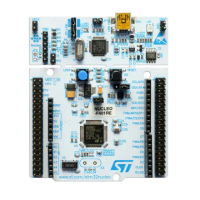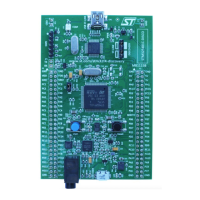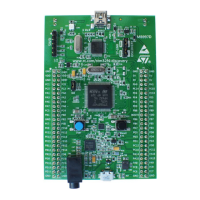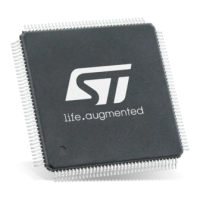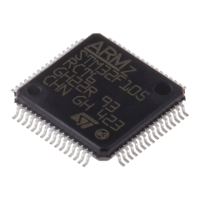Digital filter for sigma delta modulators (DFSDM) RM0402
358/1163 RM0402 Rev 6
Clock absence detection
Channels serial clock inputs can be checked for clock absence/presence to ensure the
correct operation of conversion and error reporting. Clock absence detection can be
enabled or disabled on each input channel y by bit CKABEN in DFSDM_CHyCFGR1
register. If enabled, then this clock absence detection is performed continuously on a given
channel. A clock absence flag is set (CKABF[y] = 1) and an interrupt can be invoked (if
CKABIE=1) in case of an input clock error (see CKABF[3:0] in DFSDM_FLT0ISR register
and CKABEN in DFSDM_CHyCFGR1). After a clock absence flag clearing (by CLRCKABF
in DFSDM_FLT0ICR register), the clock absence flag is refreshed. Clock absence status bit
CKABF[y] is set also by hardware when corresponding channel y is disabled (if CHEN[y] = 0
then CKABF[y] is held in set state).
When a clock absence event has occurred, the data conversion (and/or analog watchdog
and short-circuit detector) provides incorrect data. The user should manage this event and
discard given data while a clock absence is reported.
The clock absence feature is available only when the system clock is used for the CKOUT
signal (CKOUTSRC=0 in DFSDM_CH0CFGR1 register).
When the transceiver is not yet synchronized, the clock absence flag is set and cannot be
cleared by CLRCKABF[y] bit (in DFSDM_FLT0ICR register). The software sequence
concerning clock absence detection feature should be:
• Enable given channel by CHEN = 1
• Try to clear the clock absence flag (by CLRCKABF = 1) until the clock absence flag is
really cleared (CKABF = 0). At this time, the transceiver is synchronized (signal clock is
valid) and is able to receive data.
• Enable the clock absence feature CKABEN = 1 and the associated interrupt CKABIE =
1 to detect if the SPI clock is lost or Manchester data edges are missing.
If SPI data format is used, then the clock absence detection is based on the comparison of
an external input clock with an output clock generation (CKOUT signal). The external input
clock signal into the input channel must be changed at least once per 8 signal periods of
CKOUT signal (which is controlled by CKOUTDIV field in DFSDM_CH0CFGR1 register).
Figure 70. Clock absence timing diagram for SPI
If Manchester data format is used, then the clock absence means that the clock recovery is
unable to perform from Manchester coded signal. For a correct clock recovery, it is first
necessary to receive data with 1 to 0 or 0 to 1 transition (see
Figure 72 for Manchester
synchronization).
MS30767V2
CKOUT
SPI clock presence
timing
01234567
max. 8 periods
CKINy
last clock change
CKABF[y]
error reported
restart counting
20
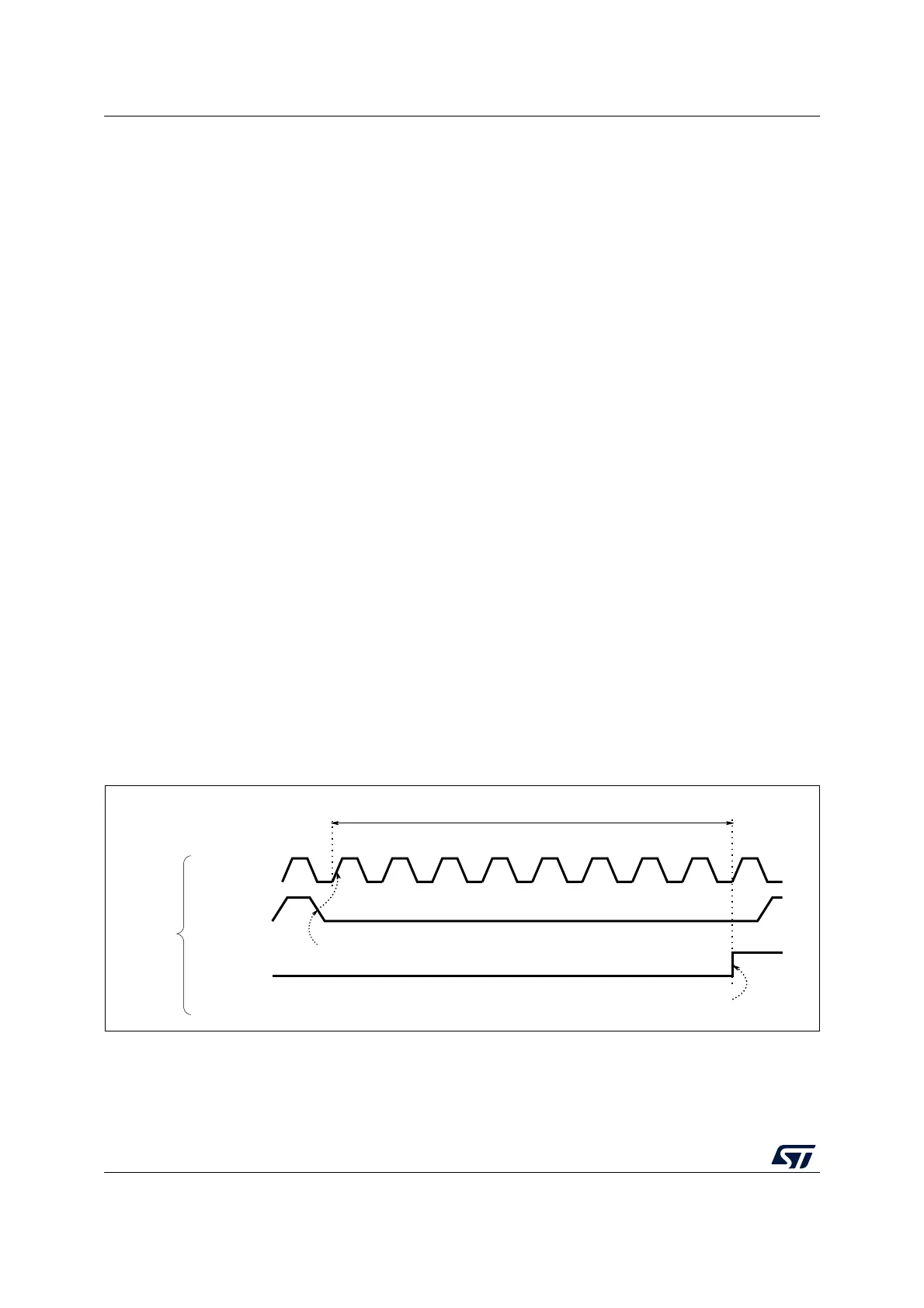